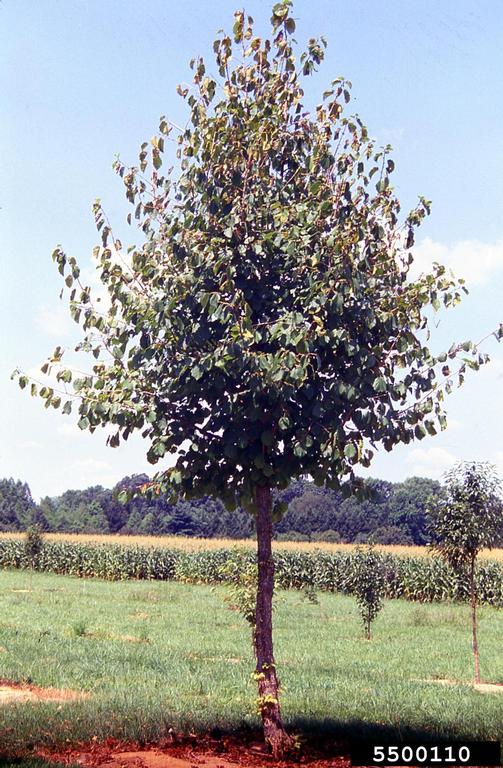
T. Davis Sydnor, The Ohio State University, Bugwood.org
Scientific Name: Corylus colurna
Native to: southeast Europe and western Asia
Mature Height*: 40-55’
Spread*: 20-30’
Form: conical, symmetrical, medium texture
Growth Rate*: medium (35 feet over a 20-year period)
Foliage: 3-5”, dense green, simple leaf
Fall Color: poor, yellowish-green
Flowers: inconspicuous; catkins in early spring can be rather handsome
Fruit: Half-inch nut in a fringed husk, gathered by squirrels and blue jays
Bark: pale brown in color; older bark develops a flaky character and as scales fall off a brown or orange-brown under-bark is exposed
Site Requirements: grows on all soil types and under a wide range of conditions; is pH adaptable; prefers full sun; may need a little extra water the first couple of years following transplanting but, after that, is considered drought tolerant
Hardiness Zone: 4-7
Insect & Disease Problems: no series pests but can get Japanese beetle
Suggested Applications: will adapt well to most sites suitable for a medium-sized tree (but not salt tolerant)
Limitations: may be difficult to find
Comments: can be difficult to transplant; make sure to keep roots moist and plant at the proper depth
*Urban tree size and growth rate vary considerably and are strongly controlled by site conditions.
(This is an updated version of an article written by former DNR Urban Forestry Coordinator Peter-Jon Rudquist for the urban forestry newsletter in 1995.)
